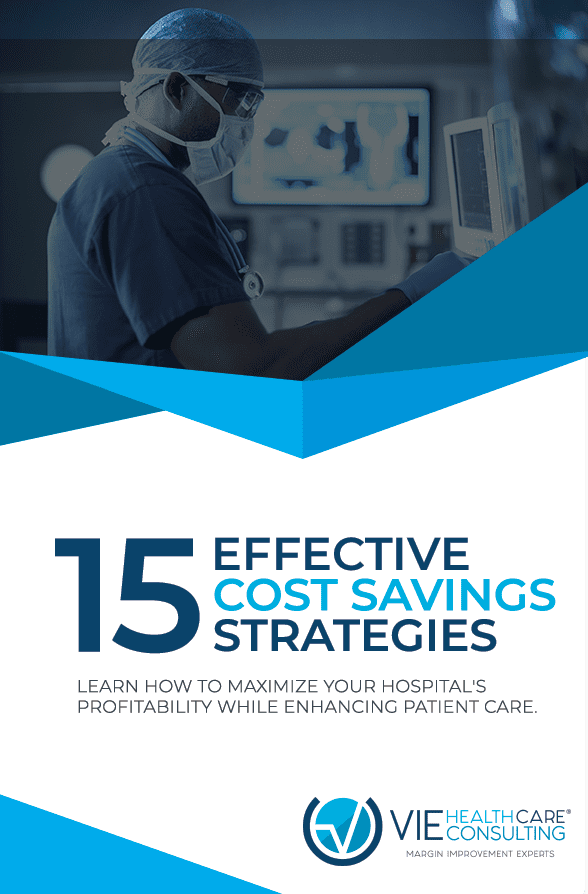This article was written by Lisa Miller.
Comprehensive Care for Joint Replacement Proposed Changes
The Center for Medicare and Medicaid Innovation Center has been testing various bundled payment models with the goal of providing high quality and efficient patient care to Medicare beneficiaries while reducing the cost of care.
In this article, I outline the proposed CMS changes to the Comprehensive Care for Joint Replacement Model (CJR).
What is the CJR?
The Comprehensive Care for Joint Replacement Model (CJR) is an episodic payment model designed to incorporate all services for patients undergoing LEJR (lower extremity joint replacement) inpatient surgeries. The model was initiated on April 1, 2016 and was scheduled to extend through December 31, 2020.
Services included everything from the initial surgical admission to an inpatient facility through the 90 days following discharge. Hospitals are incentivized to collaborate with physicians, and post-acute care providers for all services under the CJR model. They earn reconciliation payments for attaining their target benchmarks in cost and quality measures.
Analysis of the CJR program: 7 proposed changes
The Lewin Group [4] was tasked by CMS to complete a comprehensive analysis of the CJR program. They released their second report in June 2019 detailing their findings. This report concluded that the Medicare saving due to the CJR model was estimated to be $17.4 million while the quality of care was maintained.
The Medicare saving due to the CJR model is estimated to be $17.4 million while quality of care is maintained. Click To Tweet
Based on these detailed findings and that of other peer-reviewed scientific publications, CMS has proposed the following changes to the original CJR model:
1. Time period: The original time period for CJR was 5 years – 2016/year 1 through 2020/year 5. CMS proposes to extend the program for 3 more years (beginning 1/1/2021 – year 6 through 12/31/2023 – year 8) to gain additional information regarding the program success.
2. Participation criteria: CMS proposes that only hospitals located in 34 mandatory metropolitan statistical areas (MSAs) will continue to participate after Dec. 31, 2020. The 33 voluntary MSA facilities and low-volume or rural hospitals will be excluded after 12/31/2020.
3. Episode definition: CMS proposes that there should be a change in the “episode definition” to include Total Knee Arthroplasty (TKA) and Total Hip Arthroplasty (THA) performed as outpatient procedures (Outpatient TKA/THA procedures and inpatient admissions for MS-DRG 469 or 470).
- MS-DRG 470 with hip fracture (also included is the Outpatient THA with hip fracture).
- MS-DRG 470 without hip fracture (also included is the Outpatient TKA & THA without hip fracture).
- MS-DRG 469 with hip fracture.
- MS-DRG 469 without hip fracture.
4. Target pricing: CMS proposes a change to the target price calculation, upon which the reconciliation payments are made. The new target will be based on one year of claims data (the most recently available year). The baseline claims data will be updated each year.
“Additionally, since we are proposing to include OP TKA/THA procedures as well as inpatient admissions for MS-DRG 469 or 470 in the CJR episode definition, we have determined that the most recently available 1 year of data will in fact be a more appropriate baseline period on which to set target prices as it contains both inpatient and outpatient LEJR claims.” [1]
5. Risk adjustment factors: CMS proposes that additional risk adjustment factors will be utilized and calculated annually prior to the performance years. These include:
- Fracture status.
- The number of HCC conditions per episode (0,1,2,3,4 or more).
- The patient’s age (<65 y/o,65-74 y/o, 75-84 y/o, or >=85 y/o).
6. Retrospective trend adjustment factor: CMS proposes to continue to base pricing on regional pricing and remove the national trend update factor. This should account for any Medicare payment updates. CJR Quality scores will be recognized if in the good and excellent categories.
7. Reconciliation process: CMS proposes to change the reconciliation process. In lieu of the current 2 month and 14 month calculation, CMS proposes to calculate once; six months after the close of the performance year.
Additional proposed changes include:
- Change to the high episode spending cap calculation.
- Change to beneficiary notification.
- Change to gain sharing caps.
- Change to the appeals process.
- Change to waivers.
CMS welcomes public comments about the proposed changes, which need to be received by April 24, 2020.
The American Hospital Association shared an initial comment in a special bulletin as follows:
“The AHA has long been supportive of voluntary participation in alternative payment models as a pathway to potentially improve care coordination and efficiency. As such, we are disappointed that CMS is not proposing to extend voluntary participation options in the CJR model.” [5]
On February 28, 2020, the American Academy of Orthopedic Surgeons stated that they will provide a formal comment as well. Dr. Wilford K. Gibson, MD, FAAOS, Chair of the AAOS Advocacy Council gave an initial statement regarding the proposed ruling. [6]

Points covered in the statement included:
- The AAOS is encouraged by new opportunities proposed with LEJR care.
- They welcome changes to the include the outpatient procedures and the added risk adjustment methodology.
- The consideration of a similar model for ASCs is interesting.
- The AAOS is opposed to the mandatory nature of CJR and the proposed one year target pricing calculation.
- They are concerned with CMS’ decision to continue with hospital leadership as opposed to physician leadership and exclude voluntary participants.
“AAOS hopes that CMS will address these concerns in striving to create a future payment arrangement for procedures across the care continuum. We look forward to submitting formal comments and continuing to work with the agency on developing patient safety and appropriate site of care guidelines for LEJR procedures.” [6]
References
[1] https://www.federalregister.gov/documents/2020/02/24/2020-03434/medicare-program-comprehensive-care-for-joint-replacement-model-three-year-extension-and-changes-to
[2] CMS- Comprehensive Joint Replacement Model Information. Retrieved at: https://innovation.cms.gov/initiatives/CJR
[3] CMS- CJR Proposed Rule Fact Sheet– February 24, 2020. Retrieved at: https://www.cms.gov/newsroom/fact-sheets/comprehensive-care-joint-replacement-model-three-year-extension-and-changes-episode-definition-and
[4] CMS Comprehensive Care for Joint Replacement Model: Performance Year 2 Evaluation Report; The Lewin Group Report submitted to CMS in June 2019.
Retrieved at: https://innovation.cms.gov/Files/reports/cjr-secondannrpt.pdf
[5] CMS Proposes Changes to Hip and Knee Bundled Payment Program; AHA Special Bulletin, February 21, 2020. Retrieved at: https://www.aha.org/system/files/media/file/2020/02/cms-proposes-changes-hip-knee-bundled-payment-program-bulletin-2-21-2020.pdf
[6] AAOS on Comprehensive Care for Joint Replacement Model Proposed Rule; American Academy of Orthopedic Surgeons, February 28, 2020. Retrieved at: https://www.aaos.org/aaos-home/newsroom/press-releases/aaos-on-cjr-proposed-rule/



